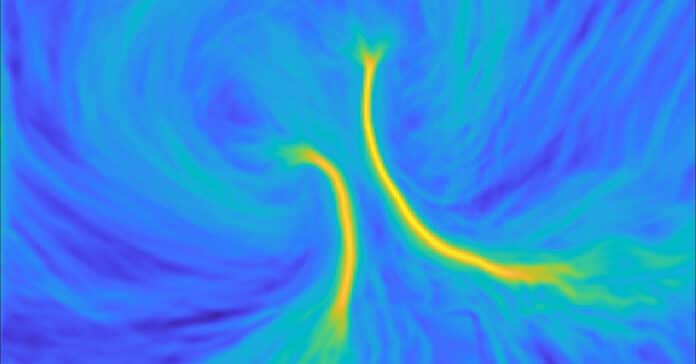In vertebrate gastrulation, an embryo changes from a single layer of cells to a multilayered structure called a gastrula. This transformation involves the organized movements of many cells, ranging from hundreds to tens of thousands, depending on the species. In chick embryos, the movements are guided by patterns of actomyosin cables that span multiple cells, helping coordinate the flow of tissues.
Scientists at the University of California San Diego, the University of Dundee (UK), and Harvard University studied gastrulation in chick embryos, similar to human embryos at this stage.
UC San Diego Assistant Professor of Physics Mattia Serra led a collaborative effort combining theoretical and experimental science. His team created a mathematical model. Remarkably, this model successfully predicted the complex cell movements during chick embryo gastrulation, involving tens of thousands of cells. It marks a significant achievement as the first self-organizing mathematical model to reproduce these flows in chick embryos.
Scientists then determined if the model could replicate what they knew experimentally to be true and predict what might happen under different conditions. Serra’s team “perturbed” the model — in other words, changing the initial conditions or the present parameters.
The outcomes were unexpected: the model produced cell movements not seen in chicks but observed in frogs and fish. To confirm this wasn’t a theoretical quirk, collaborators in biology replicated the model’s predictions in the lab with chick embryos. Remarkably, these manipulated chicks exhibited gastrulation flows typical in fish and frogs, validating the model’s ability to predict and induce similar patterns in real biological systems.
Serra said, “Fish, frogs, and chicks all live in different environments, so over time, the evolutionary pressure may have changed the parameters and the initial conditions of embryo development.”
“But some of the self-organizing core principles, at least in this early stage of gastrulation, maybe the same in all three.”
Serra and his team are now exploring additional mechanisms that lead to self-organizing patterns on an embryo scale. Their goal is to apply these findings in biomaterials design and regenerative medicine to contribute to longer and healthier human lives.
Journal Reference:
- Mattia Serra, Guillermo Serrano, et al. A mechanochemical model recapitulates distinct vertebrate gastrulation modes. Science Advances. DOI: 10.1126/sciadv.adh8152
